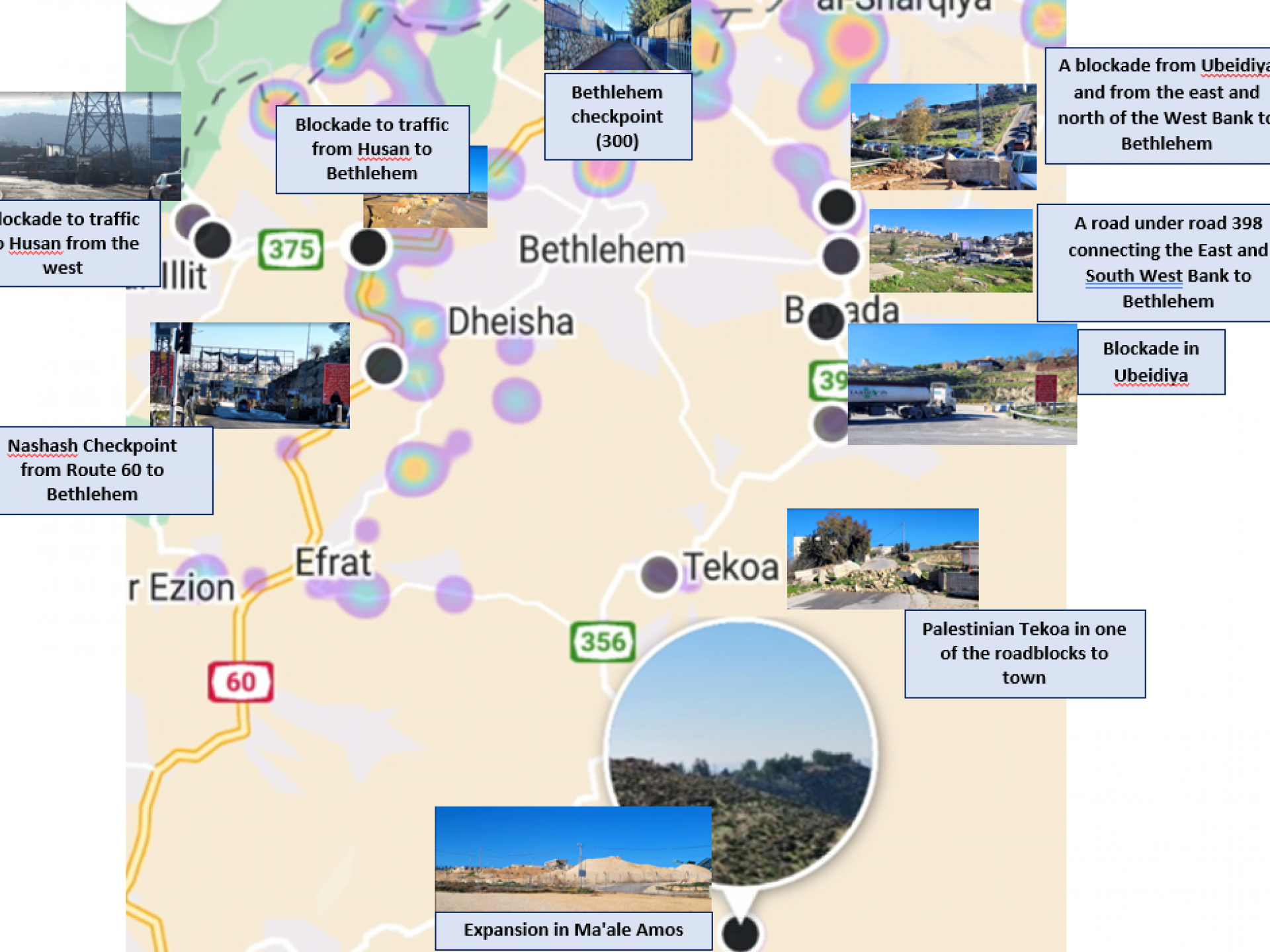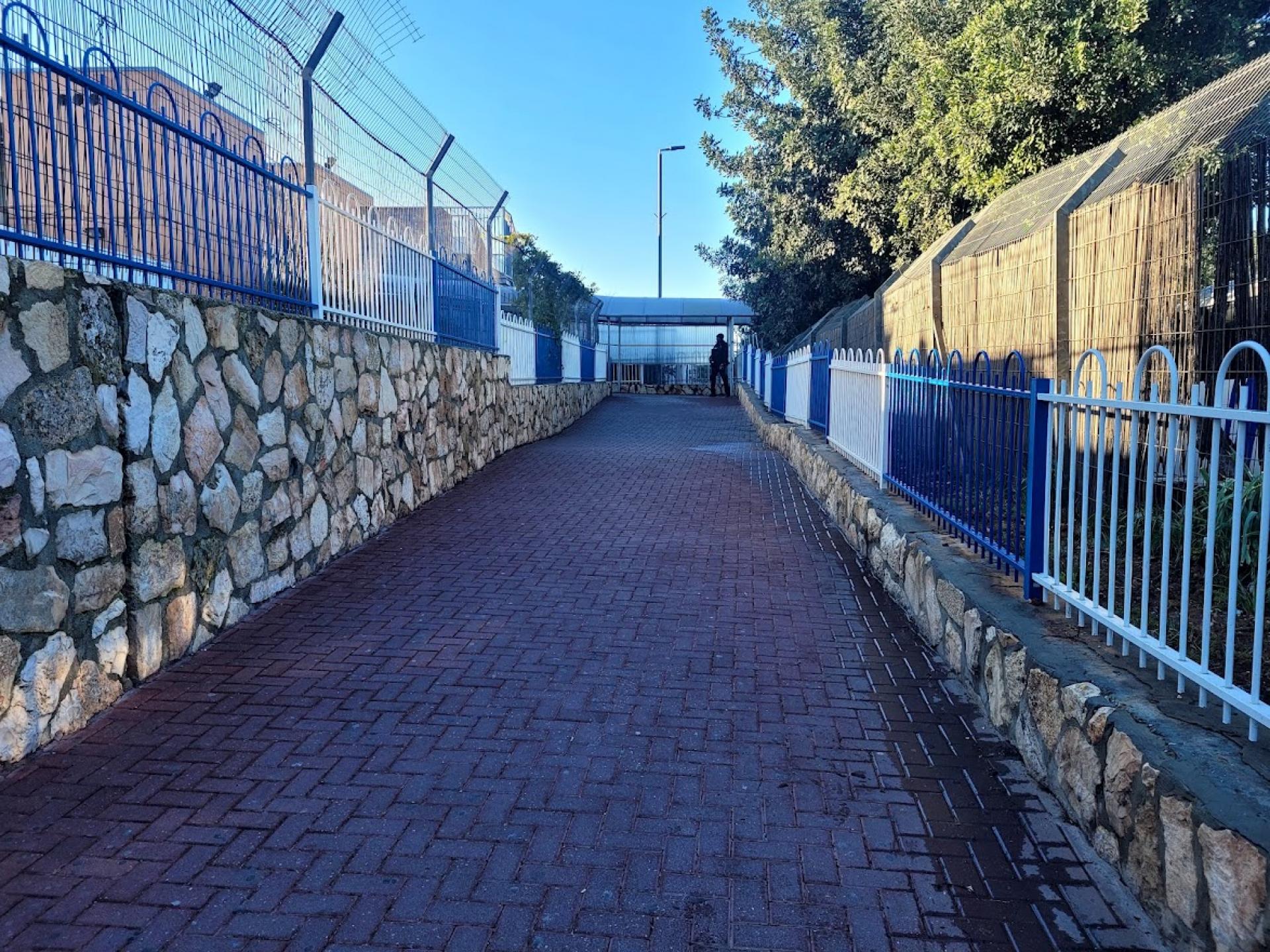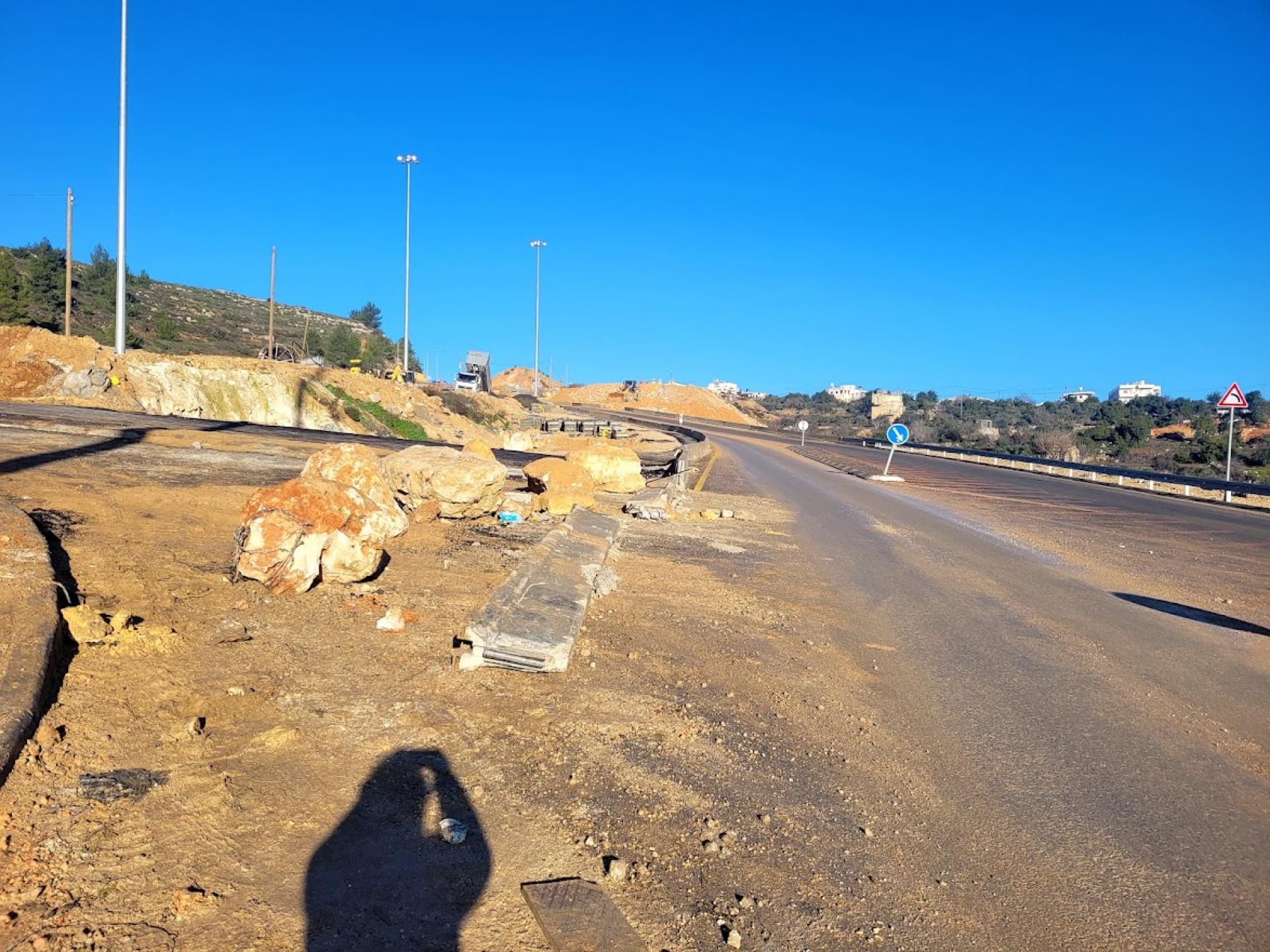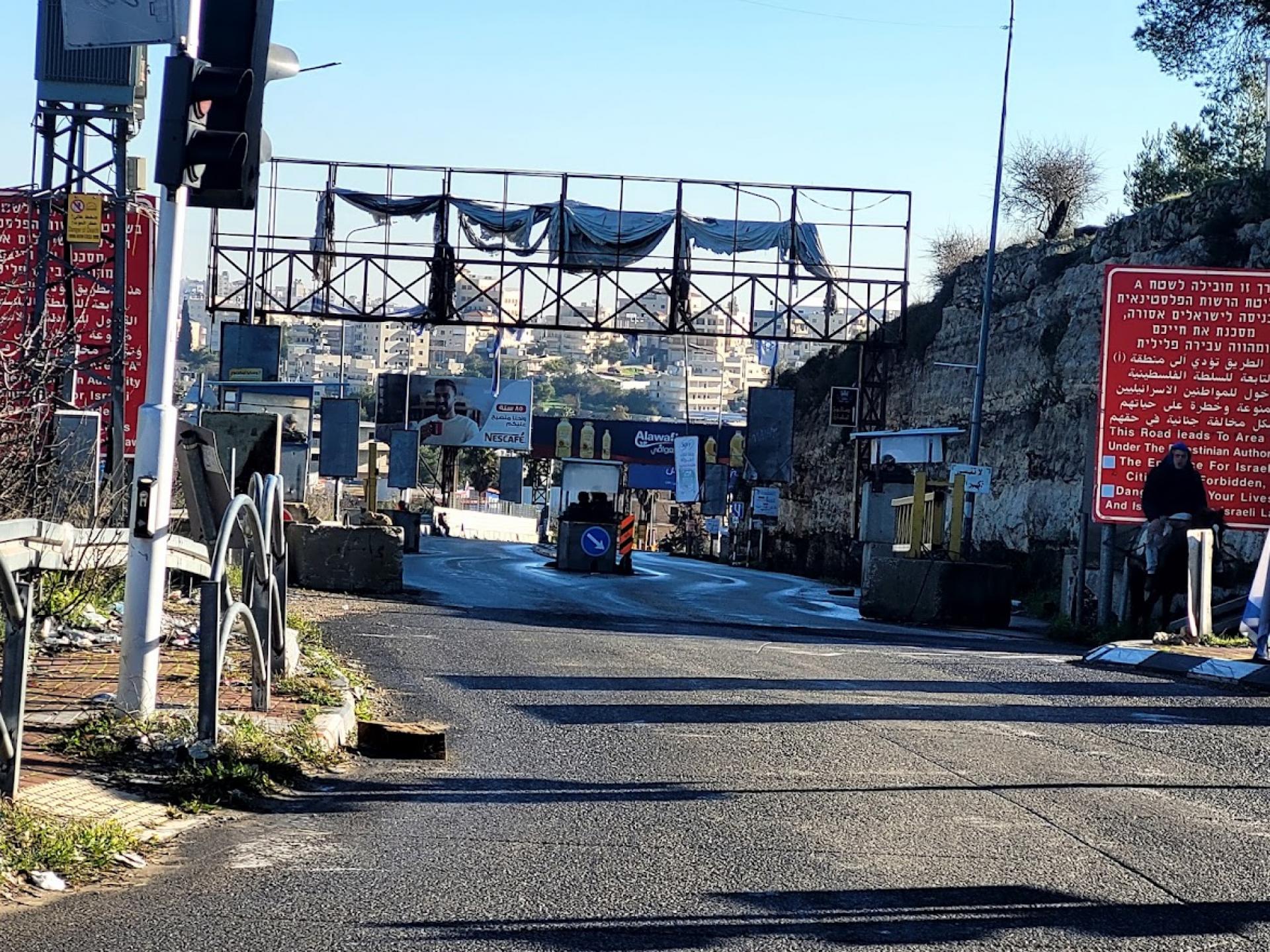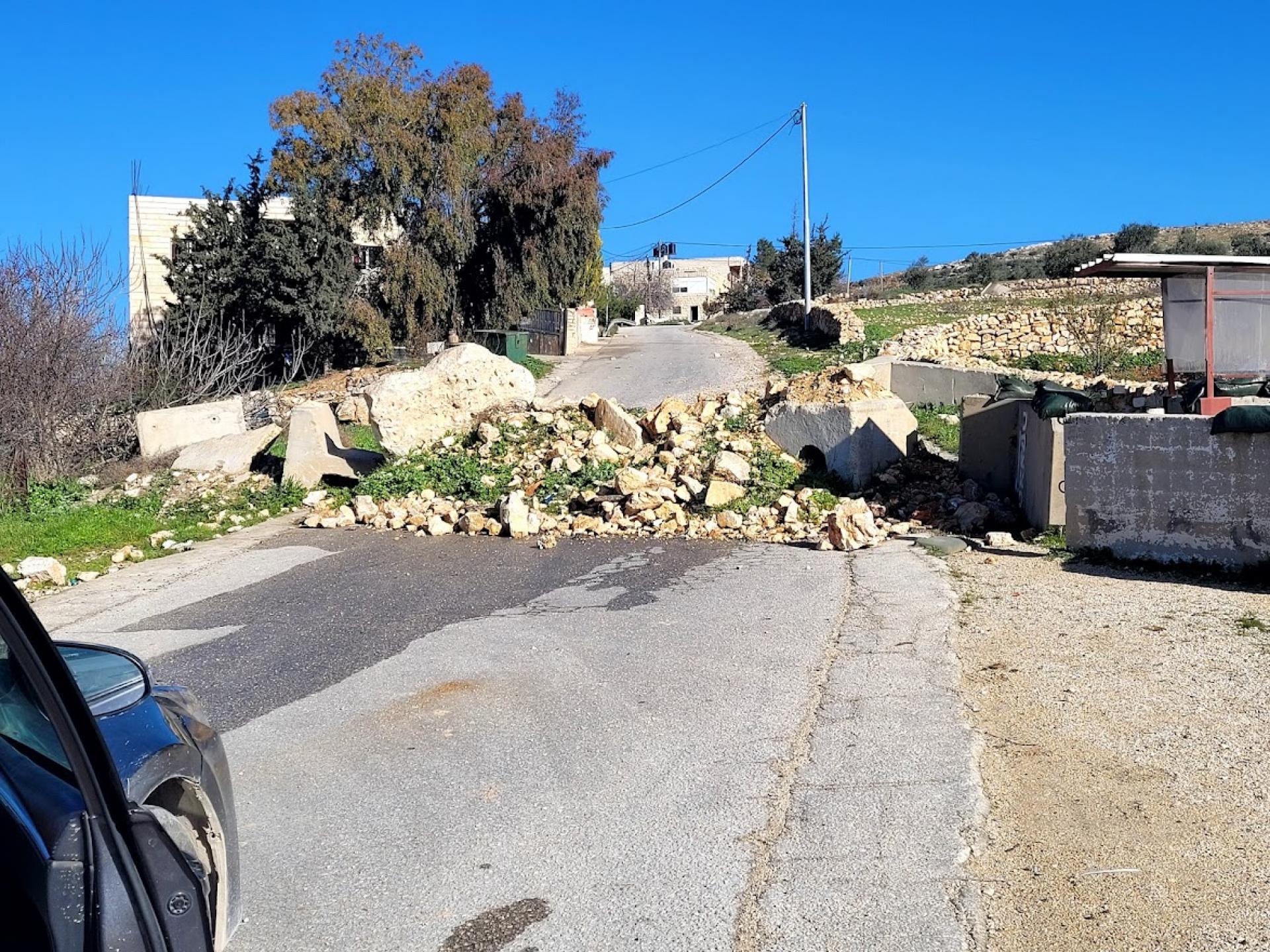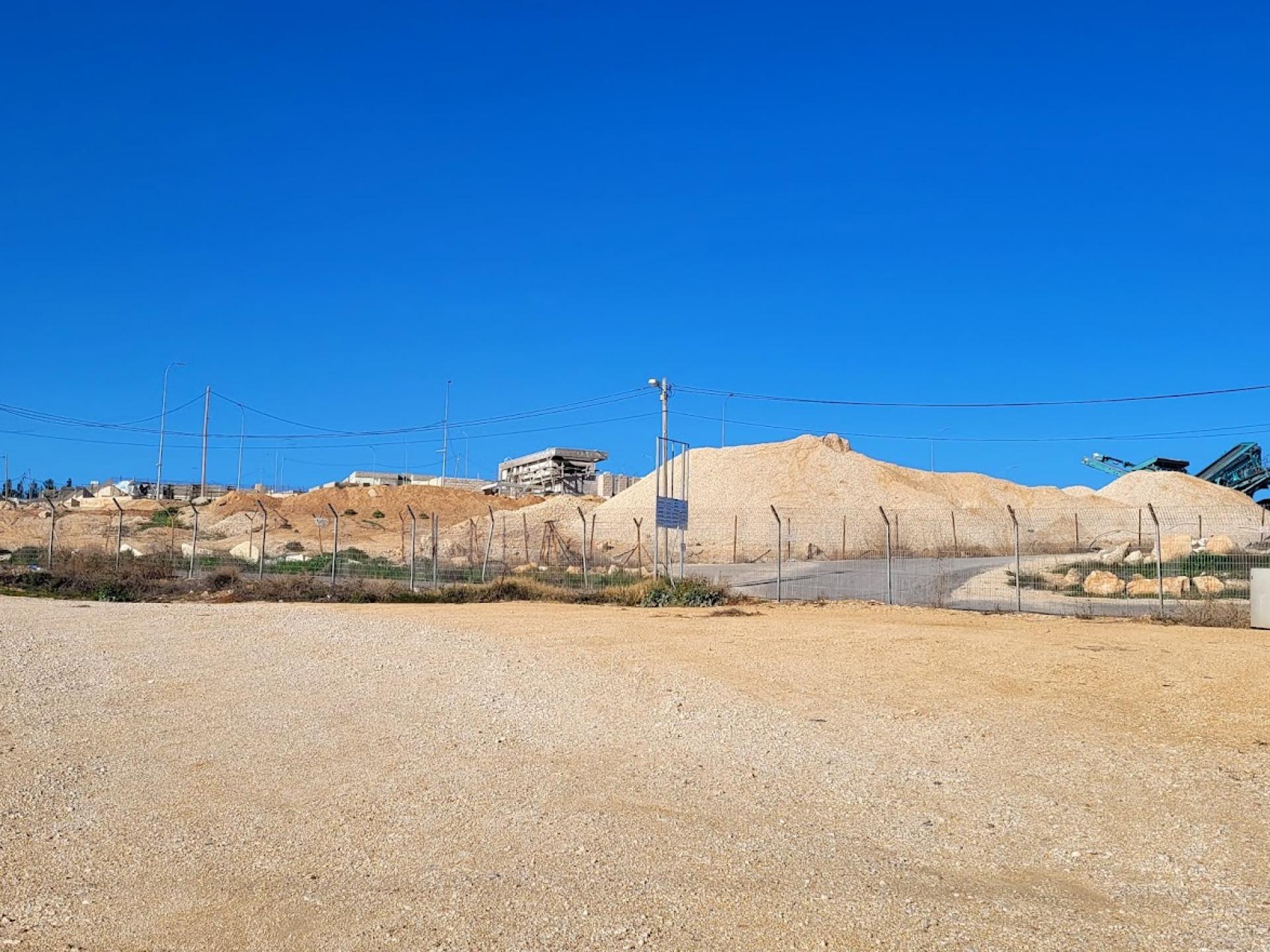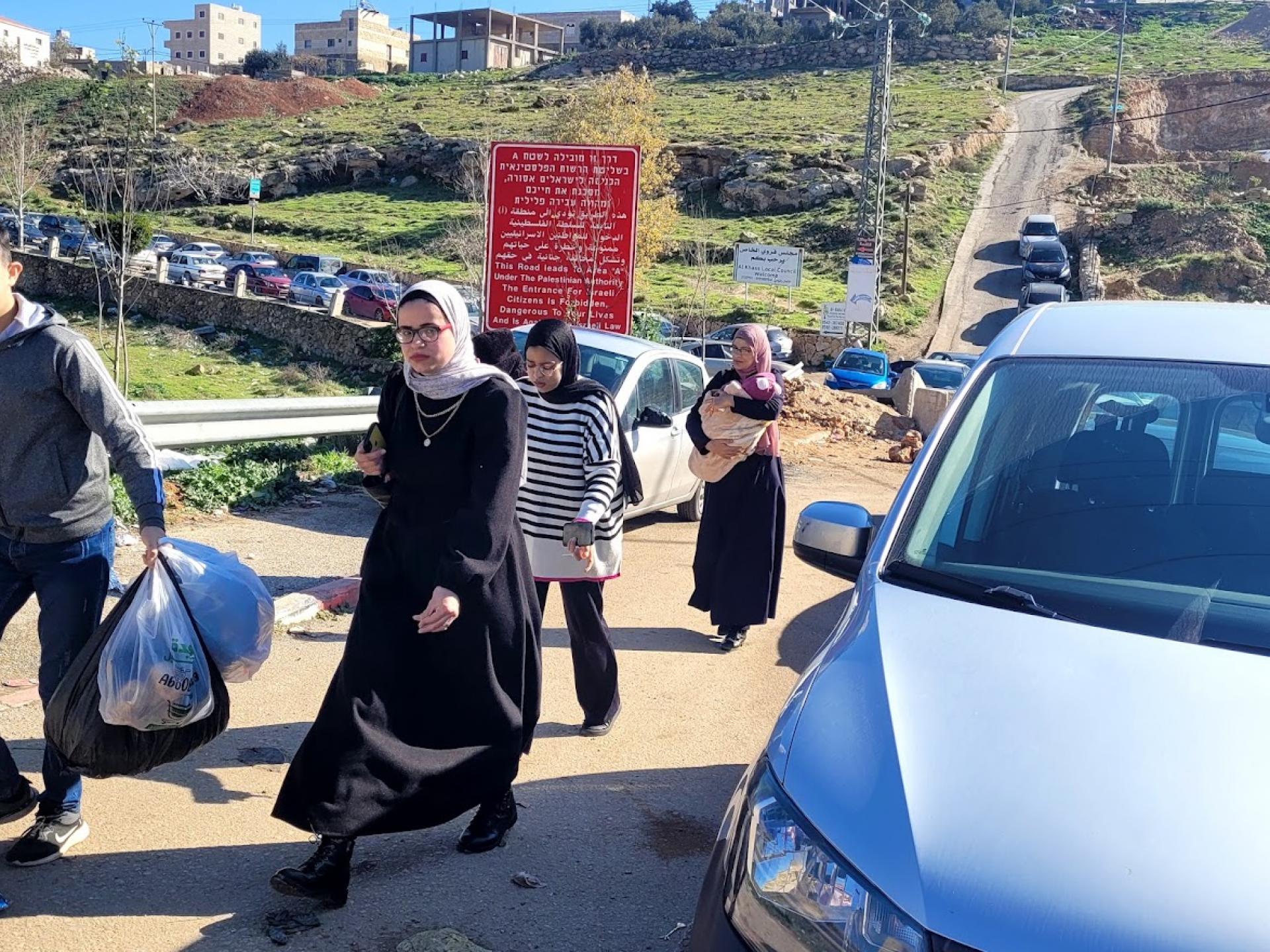Tour of the roadblocks around Bethlehem
The time is 22:30 on a stormy rainy day. M. from Hussan, west of Bethlehem, calls. His mother is showing signs of a heart attack and needs to be transferred to a hospital in Beit Jala urgently. All roads are blocked. Even an ambulance can't move. Her two sons took the mother in a car up to the concrete barricades blocking the entrance to Hussan, dragged her on foot 30 meters and put her in a friend's car beyond. All this while the mother is having a heart attack. She arrived at the hospital in critical condition and immediately underwent a catheterization. We hope she recovers.
The next day P. called from Beit Ummar. He has terminal prostate cancer. They are waiting for him at the Beit Jala hospital, but the entrance to Route 60 is closed - there is an ongoing operation in town to arrest suspects belonging to Hamas. The Nashash checkpoint is indeed open, but it cannot be reached. After desperate attempts on our part, it was decided that a friend would take him on the wrong road. They traveled on a dirt road for a while, and the jolts were unbearable for the patient. Then the friend loaded the patient on his back and carried him to the ambulance waiting on the other side.
The man is dying. Freedom of movement is a fascinating angle from which to look at the reality of people's lives and tell their story, and perhaps also take this opportunity to look at us, the Israelis who create this reality and control it. Violation of freedom of movement is also a violation of other fundamental rights, such as freedom of occupation, human existence with dignity, the right to education, health, autonomy and family relations. A violation of freedom of movement is a violation of the fabric of life and means the continued destruction of the fabric of their lives. Restrictions on the Palestinians allow freedom of movement for the settlers and freedom for organized violence and actual control over the axes of movement. Following the information from January 2024, we set out today to see what the area looks like now....... The report is accompanied by a map with the location of the blockades and photographs.
Bethlehem checkpoint (300): a line of empty buses at the entrance of the checkpoint. There are no travelers to Jerusalem. The pedestrian barrier is still closed to workers and almost everyone else - with the exception of church workers, life-threatening medical transit, legal hearings and diplomats. A soldier stands at the end of the path leading to the Israeli side of the checkpoint.
The vehicle checkpoint towards Bethlehem was opened a few days ago. We discover a new sign prohibiting the transfer of postal items through it into the territory of the Palestinian Authority (now only through the Beitonia checkpoint).
Route 60 and Route 375: It seems that they have now resumed work on widening the roads and opening another tunnel on Route 60. The tunnel checkpoint, through which only Israeli vehicles pass to Jerusalem, is manpower intensive. The entrance from the tunnel checkpoint to Beit Jala and Valja (via the ״X” checkpoint - DCL) is closed.
There is a dirt and stones blockade on the former turning road of the residents of Hussan and Batir to road 375 (west towards Beitar Illit and beyond) and road 60. The only possibility to enter Bethlehem by car for Palestinian residents coming from the west is through a narrow underpass leading to Al Khader. We photographed the works on site, which also include the extension of road 375.
We visited the entrance barrier to Hussan - this is the barrier through which the unfortunate mother was dragged with a heart attack, on her way to the hospital in Beit Jala (see Hana's report above). The family's house is across from road 375.
We photographed the checkpoint for vehicles in Nashash leading to Bethlehem via El Khader - to our surprise, this time there was no traffic (see photo). Our hypothesis is that all the many blockades of the South Bank villages reduce the ability to get here.
We continued to the southern entrance to Efrat. We really wanted to check if people are working to continue building Efrat through the Abdullah Ibrahim checkpoint which will be operated entirely by Efrat's security personnel. But upon entering it the gate that was open was closed. Still, we have no doubt that the construction of the giant snake-settlement of Efrat continues.
From there we drove to Amos Junction and in the settlements we passed we saw several convoys of soldiers with weapons drawn in several directions on the main road. What a dirty and abrasive job. No wonder eventually one could feel like shooting just because of nerves and boredom.
We headed south on road 3698 towards the Maale Amos settlement. There are several blockades of the Palestinian village of Tukua, which prevent entry. We took a picture of one of them, probably not a new one. The area is infested with abusive settlers who used the blockades to take over agricultural lands.
We saw an extension of Maale Amos called Avnei Hefetz - in front of Kisan village. The construction of the villas continues with vigor. We drove until the asphalt road ended (there is a large Palestinian village further on) and after a security vehicle reached us (it is not clear if the soldiers in it were also conscripted into readiness units).
The view in the place is spectacular - Wadi Arugot burrows under dramatic hills. Hanna says that the intention is to connect this eastern region with the Dead Sea by Jewish settlement. This area is annexed to the Gush Etzion Regional Council despite its great distance from what was Gush Etzion before 1948. And the name indicates the intention.
We returned to the road leading to Jerusalem. On the way we photographed more and more roadblocks for all the villages located east and west of road 398 leading to Jerusalem (see map). The camera repeatedly captured long lines of cars past piles of dirt and rows of stone blocks. as well as the people who pass by on foot and hope to find a way to catch a ride that will take them to schools, livelihood, medical care and families. They are desperate, these people, live in constant motion - and the terrible thing is that it is almost impossible to reach the destination on time.
repeatedly captured long lines of cars past piles of dirt and rows of stone blocks. as well as the people who pass by on foot and hope to find a way to catch a ride that will take them to schools, livelihood, medical care and families. They are desperate, these people, live in constant motion - and the terrible thing is that it is almost impossible to reach the destination on time.
The only way connecting the Palestinian traffic to Bethlehem from Jerusalem as well as from the central and northern West Bank is by an underground road. It leads to the metropolis of Bethlehem through Beit Sahour. The result is that in order to get from Ramallah and north of it to Bethlehem and from there to Hebron and the south of the West Bank, every Palestinian must go through hours and hours of bad detours and traffic jams.

